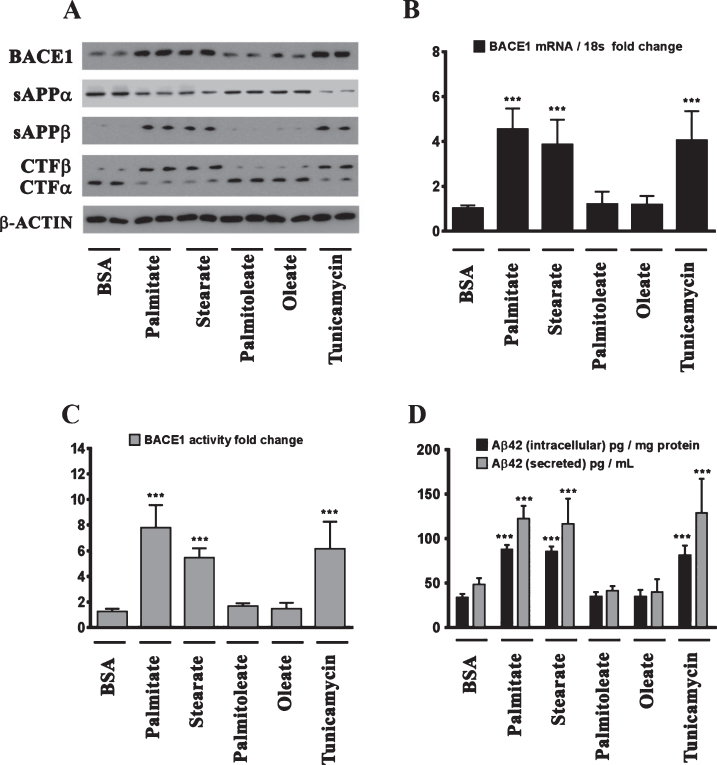Fig.3.
BACE1 expression and subsequent Aβ genesis is induced by the sFFA, palmitate and stearate, but not by their MUFA counterparts, palmitoleate and oleate. A) Representative western blots show that exogenous palmitate and stearate treatment (100 μM for 24 h), but not palmitoleate and oleate treatment (100 μM for 24 h), significantly increases BACE1 protein levels accompanied by an increase in the amyloidogenic processing of AβPP as evidenced by an increase in sAβPPβ and CTFβ levels concomitant with a decrease in sAβPPα and CTFα levels in the whole cell homogenates from SH-SY5Y-APPSwe cells. B, C) Exogenous palmitate and stearate treatment, but not palmitoleate and oleate treatment, significantly increases BACE1 mRNA expression (B) and BACE1 activity (C) in SH-SY5Y-APPSwe cells. D) ELISA immunoassays show that exogenous palmitate and stearate treatment, but not palmitoleate and oleate treatment, significantly increases the levels of the intracellular Aβ1 - 42 species in the whole cell lysates and secreted Aβ1 - 42 species in the conditioned media, from SH-SY5Y-APPSwe cells. The ER stress inducer, Tunicamycin, also increased the following - BACE1 protein levels (A), BACE1 mRNA expression (B) and BACE1 activity (C), and the ensuing levels of intracellular as well as secreted Aβ1 - 42 species (D) in SH-SY5Y-APPSwe cells. Data is expressed as Mean±S.D and includes determination made in four (n = 4) separate cell culture experiments. ***p < 0.001 versus BSA-treated cells.

